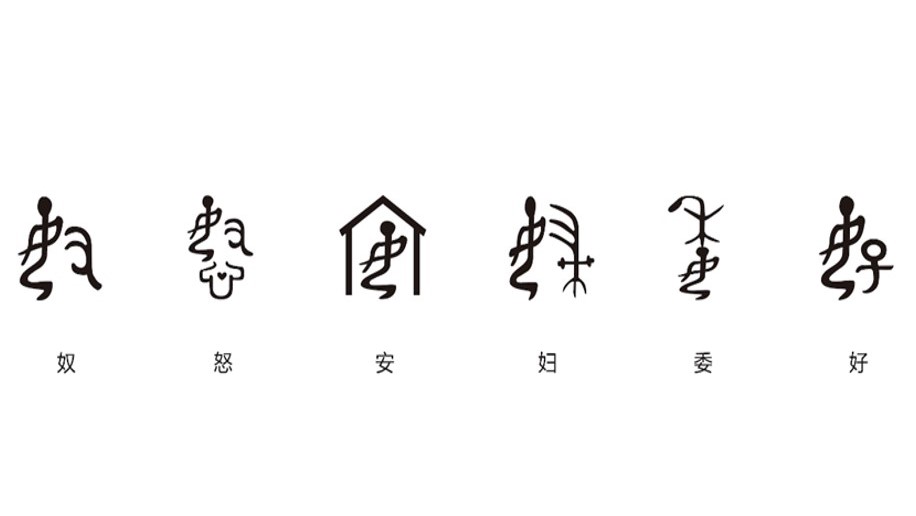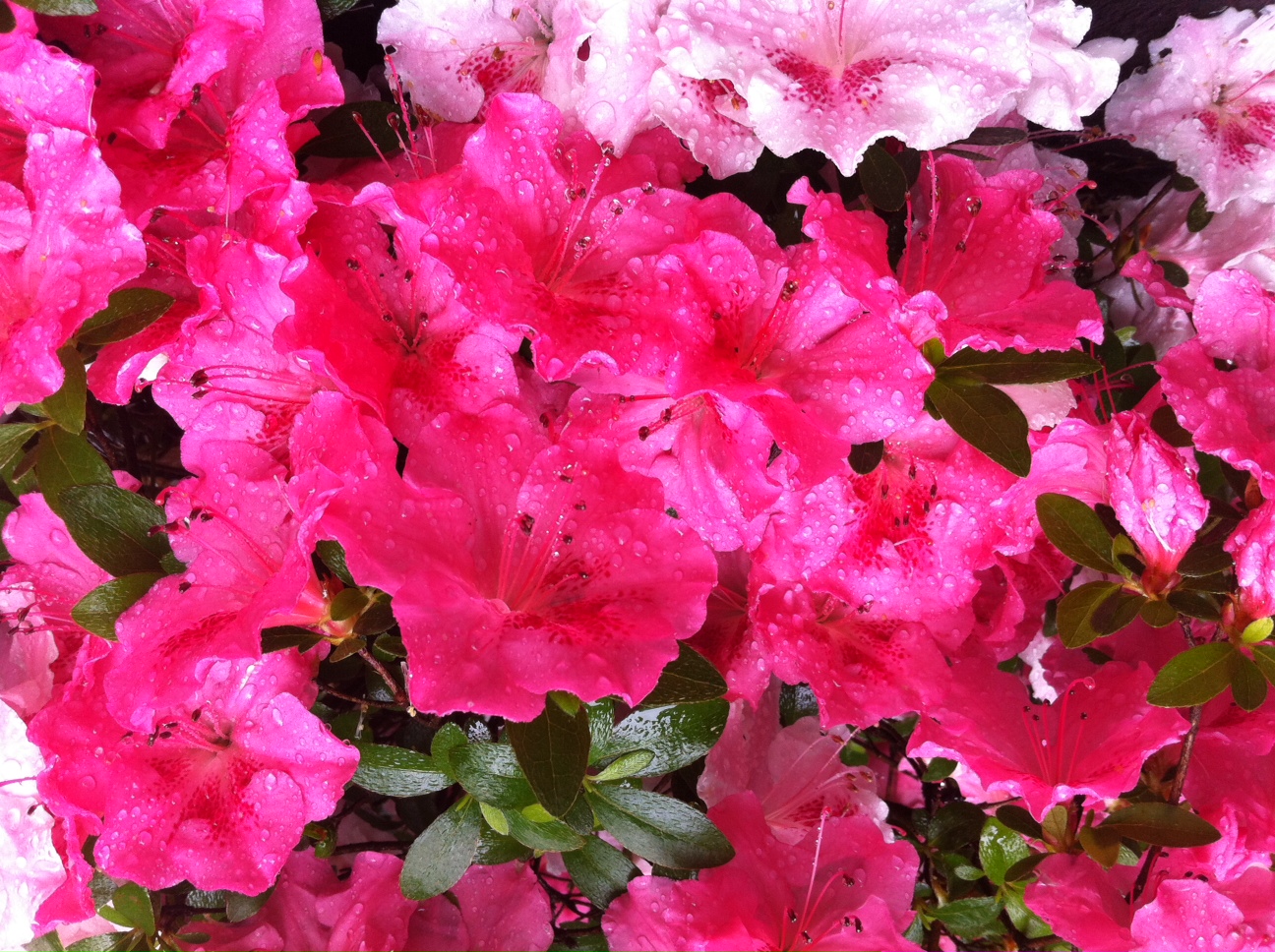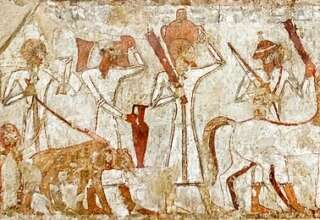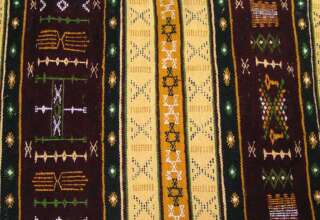
The word ‘Nu’ (First image below from left) has a left part of female (Nv) and right part as being caught by hand. It was said that during a war period, men were killed, and women were captured as trophies, ‘Nu’ means Slavery. To go further if we add a ‘Xin’(heart) at the bottom of Nu, the meaning changed from Slavery to Anger (Second image below from left). It described an intense emotion which aroused by being a slavery.
 Furthermore, the word ‘An’ (Third image above from left) is a female (Nv) staying in a house. When women were in danger of been caught, it was better to stay in the house. This word means Safe. Other words like ‘Fu’ (Fourth image above from left) which has a female (Nv) on the left side and a tool on the right side, this character clearly shows that females are assigned housework. This word means Lady.
Furthermore, the word ‘An’ (Third image above from left) is a female (Nv) staying in a house. When women were in danger of been caught, it was better to stay in the house. This word means Safe. Other words like ‘Fu’ (Fourth image above from left) which has a female (Nv) on the left side and a tool on the right side, this character clearly shows that females are assigned housework. This word means Lady.
To go further, a spike of rice pressing on a female head was called ‘ Wei’ (Fifth image above from left), and there is no matching translation in English or Spanish for this word. It means obeying, feeling wronged but having to contain it. This is one who knows that they would be unfairly treated, but must remain silent, pleasing others and bending over. The idiom Wei Qu Qiu Quan means to bend over and repress the negative feeling, avoid conflict with others in order to keep the relationship harmonious. Again, the last word ‘Hao’ (Sixth image above from left) is a female with a boy child, which means a woman shall give birth to boy child, that means Good.
Carl Jung (1989) proposed that the collective unconscious is populated by instincts as well as by archetypes. I would go further to say that the Chinese character is a form of collective unconscious itself. The characters can be traced back to ancient rituals, and they conveyed social expectations. Other than phonetic transcription, a Chinese word is a mind picture. When the word has been read and written, the meaning is transmitted right from the visual system to other elements of the brain.
Visual Cortex and Cognition
Wittgenstein (1996) stated that the stories we tell ourselves about the world and the stories we have been told about the world we live in, impact not only our lives but also the world around us. He further said that the cultural narrative is the culture. The right cortex of our brain stores memories of image, sound, touch and smell. Those memories are stored with the emotions they evoke. Van der Kolk (2014) suggested that the stored emotions react automatically when activated by stimulations. The body and brain go through the same journey we experienced in the past (Van der Kolk, 2014, p. 45).





